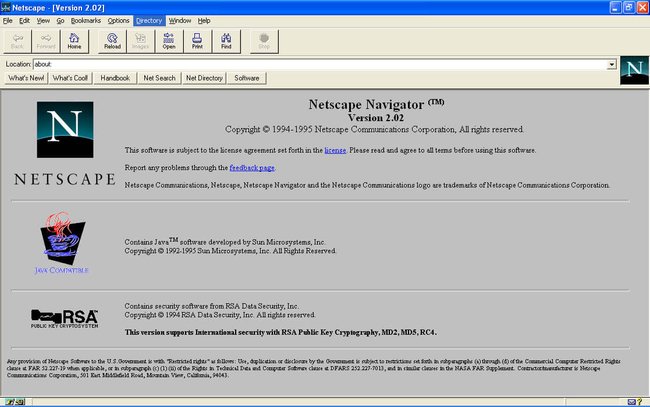Who do we call a frontend developer nowadays ?
A frontend developer is somebody who implements the webdesign of a website by using HTML, CSS and Javascript. Most websites are created for the public. Some good points to measure a successful website is based on some important scores which a frontend developer should focus on:
- Number of user interaction.
- Time on site.
- Total pages.
- Site speed.
- New and returning visitor count.
- Visitor loyalty/engagement.
All of these are connected to the frontend of the website. One of the most important parts of frontend development is UX, the importance of which grows day by day. The frontend developer has to know what tools to choose (and how to use them) to create the most user orientated experience, some of which includes:
- Which framework to implement.
- JS Bundler settings.
- Effective implementation of static assets.
- Optimized code structure.
- Efficient load order of website elements.
- Page performance improvements.
Even though every website differs - and each requires different approaches - we can put together a list of the general top 10 important skills recommended for a successful frontend developer in 2022.
The Top 10 Important Skills
Having different checklists about "most important" things are a good way to push yourself to have a structure in many parts of life. This applies to developer competencies as well. Remembering the top 10 helps you never lose focus. The list below is ordered from most to least important, however mastering all is highly recommended.
1.) Javascript
All modern websites have some kind of Javascript today. A user can interact with a website through Javascript functions/code. Understanding Javascript is the most important thing for a frontend developer. Nowadays it is the base building block of most websites. If this knowledge is stable, then you can build almost everything. It is also connected and a prerequisite to several other competencies below. We are all human and we all make mistakes, so when you face a bug in a JS framework for example, you need to go down one level and inpect the JS code it is built upon.
2.) Javascript Frameworks
An efficient frontend developer should know about JS frameworks. The use of these - mostly free - tools can speed up development process big time. It is also important to dive into each end every one of them to choose the right tool for the actual project. Some mayor frameworks are:
- Angular
- Vue.js
- React
- Ember.js
3.) HTML (HTML5) And Up-to-date CSS (CSS3) Knowledge
There was a consideration of moving HTML and CSS knowledge to first place, but we are in 2022! Today HTML knowledge is also a necessity and without Javascript knowledge you can't go far. HTML ans CSS are basic building blocks of a website. But your knowledge about it has to be also up-to-date. You have to know about the latest HTML code principles (HTML5) and also about preprocessors such as SASS and SCSS. The website structure you implement will not just make your code readable, but also affects your SEO positions too.
4.) Proper Testing And Debugging Tools
In our everyday developer life we face a lot of pressure which is mostly about reaching delivery deadlines. During this process some might skip the step of testing the code itself. This might look fine for the short-term but can have severe consequences if your website looses customers due to untested code. What's more a proper test setup automatically roots out the small issues which can be time-consuming to even find.

Testing and debugging is inevitable to provide a steady, problem-free user experience to your visitors. A professional business should be stable and have a high uptime performance. Testing your code makes sure you don't have to worry about bugs in the codebase of your app. Some mayor testing frameworks are:
- JEST
- MochaJS
- Jasmine
5.) Responsive Design For Different Devices
We are living with hundreds of different types of devices that can communicate with the internet. When creating a website, we always have to consider that the users are coming from a wide spectrum of these gadgets. Each of these devices have their own representation of our website. In order to make sure the user experience is great on all of them we should put work and effort into the implemented ideas so that it provides the same experience for everyone. The term "responsive design" means that the website we release is able to be used device-independent. We must always make sure that the look and design is adjusted and fitting to the appliance the visitor is using. The event handling should also be different depending on mobile, PC or tablet. It can be an exhaustive job, but definitely an important part of software development.
6.) Code Repository Management Tool
The reason for listing most of these competencies do not really need much explanation. This applies to repository management knowledge too. Version controlling such as Github, BitBucket or Gitlab provides a developer:
- Structured code backup.
- Easy rollback solution.
- CI/CD solutions.
- Teamwork and channel for communication.
- Traceability.
- Reduction of duplication.
- Document history.
- Project overview.
- Finding and fixing security holes.
- Automated testing.
7.) JS Bundlers And Node
JS Bundlers are tools that we use to bundle modules together into one single Javascript file that is to be executed in the browser. There are several benefits of bundlers:
- Help browsers which does not support module system.
- Transpile code so older browsers are supported too.
- Handle module dependency order.
- Optimize and minify code.
- Can be configured to load assets in chunks (possibly in parallel).
- Handle dependency order of assets.
- Provide automatic versioning.
Some well-known bundlers:
- Webpack
- ParcelJS
- RollUp
- Browserify
- Gulp
- Grunt
8.) Browsers And Tools

A frontend developer is using Javascript, HTML and CSS to style the frontend of a website. The created code is interpreted by the browser. There are many different browsers, and because of this a successful company should make sure its websites are compatible with most of them. Some browsers might have problems with the newest technical solutions, so you should make sure either provide a fallback for them or take one step back and use the older implementation until it is fully supported.
There are many browser-built-in tools helping us in development today. They show us a lot of helpful information about the websites such as security issues, HTTP requests, network information, website page timings, source code and much more. One important feature is that you can do live changes and test them:
- Change the html code.
- Modify styling.
- Run a modified HTTP request.
If can't find a built in solution for a specific issue, you can most probably find an extension that can help you. There are tons of useful extension out there for the mayor browsers. While we mostly use our local IDE-s for development, in 2022 it is crucial to know how to handle a browser to aid you in your work.
9.) Website Performance Optimizations
Most users find a website in 2 ways, either through advertisement or with the help of search engines. To minimize costs, you have to fine-tune your website so users will visit it more often (page views) and for more time (time-on-site). If important visitor related factors improve, the website will move up the ranking positions. Higher ranking positions mean more visitors and the company can consider cutting costs on advertising. A trained frontend developer should be up-to-date with the latest website performance optimizations tips and tricks.
10.) Proper IDE Setup And CLI usage
The number one step to becoming a developer is to create the favourite IDE setup. Being confident in using your dev tools is a must, this means a lot in everyday work. Even senior developers having many years of experience can spend time with small and bagatelle issues caused by the lack of mastering their IDE-s. It is important to put together a basic list of features you need to know and use in your code editor:
- Effective code search.
- Repo code change tracking.
- Code auto-completion.
- Syntax highlighting.
- Hiding/unhiding codeblocks have better focus.
- Language specific errors and warnings.
- Brace matching (automatic start and close tags).
- Easy selection (Alt + mouse drag).
- Prettifying (formatting selected code or whole document).
- Normalize spacing (change all tabs->spaces or spaces->tabs).
- Move whole lines up/down (alt+up/down).
- Global undo/redo, to change all files that were affected in a step.
- Virtual Space.
- Delete horizontal white space (ctrl+K)
- Increase/decrease indent
- Jump to beginning/end of line
When you first get to know an app, it is nice to get familiar with it in a user-friendly way, that is what GUI (Graphical User Interface) is for. But after spending some time around it is much more beneficial and efficient to use a CLI (Command Line Interface). The most important advantages of mastering and using a CLI over GUI:
- Speed and efficiency.
- Less resources used.
- High precision.
- Possibility of multitasking.
- Automation through scripts.
- Sometimes more functions.
- Less resources used.
- Consistent interface.
Wrapping It Up
It is advised that you take the list with a "grain of salt"! Suggestions of most critical frontend dev. skills depends on a lot of different factors, but the above skills will always be necessary building blocks of your knowledge. Mastering each point will make you prepared and confident in your frontend developer position (or at interviews) and that will eventually lead you to become more assertive and reliable software engineer.

The list of required competencies can be task-specific, and change accordingly. Nevertheless, if you are a frontend developer - or someone who is looking for one - the traits listed here can be a great checklist you need to go through and complete.


